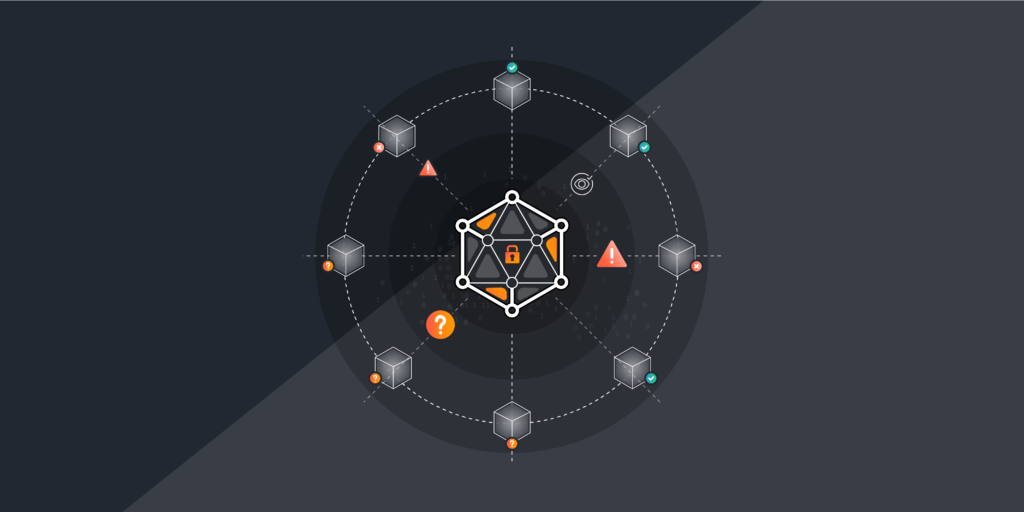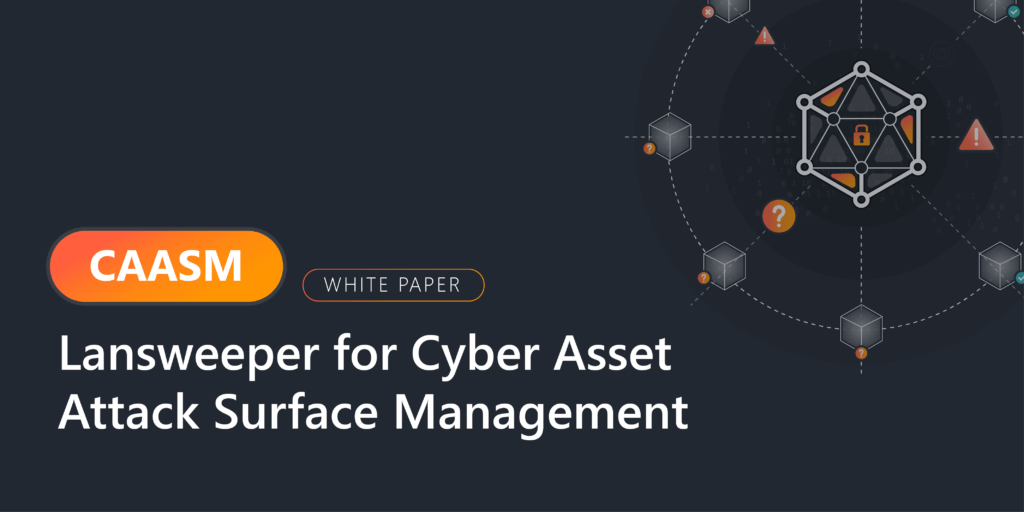
As decision-makers beef up their budgets for cybersecurity tools, many have their eye on Cyber Asset Attack Surface Management (CAASM) solutions – and for good reason. Providing connectivity for remote workers, enabling more mobility and supporting digital transformation has required IT teams to deploy and protect more devices and software than ever before. As such, the attack surface is expanding rapidly as organizations build out their technology infrastructure to accommodate new business needs.
What Is CAASM?
CAASM stands for Cyber Asset Attack Surface Management. It is the process of understanding, protecting, and managing the growing attack surface. The attack surface encompasses all points of entry that can serve as attack vectors for unauthorized users to gain access to your systems in a cyberattack.
As IT environments grow more complex, the attack surface expands. Recent trends like hybrid workspaces, remote work, digitization, mobility, and cloud computing have resulted in a never-before-seen IT sprawl consisting of both physical and virtual IT, OT, and IoT devices. This rapidly expanding attack surface creates new challenges for IT and security teams alike.
Meanwhile, cybercriminals are becoming increasingly adept at circumventing traditional security measures. The combination of a larger attack surface and savvier cybercriminals means IT security teams have their work cut out for them: Cybercrime has increased by 600% since the onset of the pandemic and, by 2025, will cost companies worldwide about $10.5 trillion annually.
Bridging the Gap Between ITAM and Cybersecurity
CAASM exists as a bridge between IT asset management and Cybersecurity. Both are becoming more complicated when faced with increasingly complex technology estates, but they are often the responsibility of two separate teams. While your IT team manages your assets and keeps everything running smoothly, the cybersecurity team is on the lookout for external threats and works to protect your network from breaches and intruders.
This divided approach often results in data silos, that are at risk of being incomplete or outdated because they only contain the data needed for a specific task or project. CAASM tools create an inventory of your entire technology estate, resulting in a single source of truth that is always complete and up-to-date. For IT teams this means full visibility into every piece of technology in the environment, its status, lifecycle, and configuration. This in turn helps the cybersecurity team discover vulnerabilities like outdated hardware and software, misconfiguration, unauthorized users, or rogue devices.
The Trouble With Understanding the Attack Surface
Before a CAASM strategy can be executed, IT teams must know what devices they need to protect. Unfortunately, about 70% of organizations don’t know what assets they have. There are several reasons for this.
1. A changing IT landscape
Today’s enterprise technology estate comprises a wide variety of assets – IT, IoT, Operational Technology (OT), cloud assets, and virtual machines. IoT devices in the homes of remote workers are prime targets for cybercriminals who use them to tunnel into enterprise networks.
2. Outdated inventories
With the IT estate rapidly expanding, manually tracking assets across the enterprise won’t cut it anymore. Spreadsheets are outdated as soon as they’re complete. Between security and performance issues and putting out fires, it’s impossible to manually keep your inventory complete, accurate, and up-to-date.
3. Shadow IT
Instead of waiting for the busy IT department to fill a request, departments may take it upon themselves to install and use unsanctioned assets. This results in a lot of network-connected assets that aren’t known by IT and thus aren’t protected and could be susceptible to an attack.
4. Data silos
Inventories are often created for individual use cases, like a data migration, a compliance audit, or some other scenario. This leads to a lot of isolated silos with duplicate work and inconsistencies between data sources. Lansweeper believes IT Asset Management should be a scenario-independent endeavor, with the goal of creating a single source of truth.
These challenges inhibit organizations from having full visibility across the IT estate – or protect it from an attack.

Lansweeper for Cyber Asset Attack Surface Management
Gain complete visibility of your technology assets.
Download the White PaperWhy Lansweeper for CAASM
Lansweeper is uniquely positioned for effective CAASM -as evidenced by a recommendation by Gartner – because it takes a different approach than other solutions.
Full Visibility, No Agents or Credentials Needed
Lansweeper combines an agentless deep scanning engine with credential-free device recognition (CDR) technology to automatically and continuously discover and recognize all IT assets across your infrastructure, eliminating manual data collection. Thanks to a variety of deployment options, Lansweeper can easily support distributed deployments and networks and remote devices. The centralized management and reporting capabilities allow you to manage your entire attack surface, no matter how dispersed, from a central console.
From servers and desktops to laptops, VMs, OT, IoT, shadow and rogue devices, user data, and all of the software and operating systems that run on the network, Lansweeper detects and identifies them in minutes. You don’t have to install an agent on any device to get started. Lansweeper is fast and easy to implement and works flawlessly, without needing credentials.
More timely, Accurate Data
Unlike other CAASM solutions that must ingest IT asset data from various sources which may or may not be accurate, Lansweeper extracts asset data from the “bare metal.” Because the data is more reliable and accurate, results improve, security teams can uncover all vulnerabilities – outdated or unpatched software, encryption issues, weak passwords, misconfigurations and more – and gain immediate access to the information they need to fix potential issues and reduce risk.
Better insights
With Lansweeper, you can visualize and analyze data easily, using pre-built dashboards or customizing your own to share your findings, or by integrating Lansweeper with Power BI, for a complete 360-degree view of the technology estate. Over 300 pre-built or custom reports allow you to effortlessly extract relevant data.
The Risk Insights feature gives you a complete overview of all vulnerabilities threatening your assets, drawn from the VulnCheck, VulDB, CISA, and MS databases. Additional information on the severity, patch availability, and which systems are at risk allows you to make your own assessments and prioritize accordingly. Visualize your IT estate in network diagrams to easily locate compromised devices in your network and see their connections and dependencies.
Seamless integrations
Lansweeper is open and interoperable by design, which means you can integrate it with other systems across your tech stack, including CMDB, ITSM, SIEM, and SOAR tools. It can also aggregate the technology asset data from various sources, creating one single source of truth. Not only does this eliminate data silos, it cuts operational overhead and simplifies complex investigations. Plus, Lansweeper data can be leveraged across all of those business-critical tools to satisfy data needs for various use cases.
Lansweeper’s Unique Edge in CAASM
Lansweeper’s unique, agentless approach to IT discovery gives it a definite edge in supporting CAASM efforts. The combination of the deep-scanning engine and credential-free device recognition guarantees full visibility of your technology estate. It eliminates the need for manual data collection and solves the problem of data silos by creating one single source of truth for all your IT, OT, and IoT devices, both physical and virtual, no matter how dispersed the network.
Thanks to robust data analytics and seamless integrations, Lansweeper can fuel all your ITAM and IT security goals and projects with always accurate asset data. Direct access to reliable data leads to informed decision-making and proactive risk management. As the complexity of your IT environment continues to grow, Lansweeper is a vital tool in discovering and understanding your attack surface, enhancing both operational efficiency and security posture.

Lansweeper for Cyber Asset Attack Surface Management
Gain complete visibility of your technology assets.
Download the White Paper